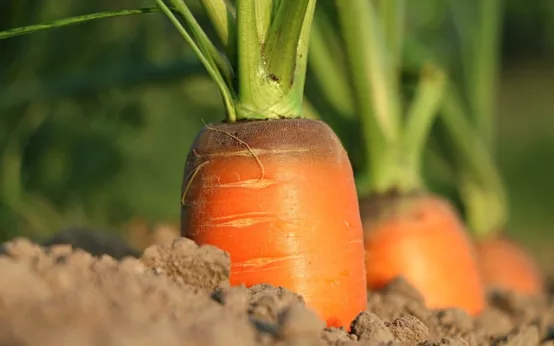Overview.
Marinara sauce is the epitome of simplicity and flavor, making it a beloved component in Italian cuisine. Whether you’re tossing it with pasta, spreading it over pizza, or using it as a base for a more complex dish, a good marinara sauce can elevate any meal. In this guide, we’ll take you through the steps to create a classic marinara tomato sauce that is rich, flavorful, and easy to make at home.
Let’s dive into the art of making a sauce that will become a go-to recipe in your kitchen.
What is Marinara Sauce?
Marinara sauce is a simple yet flavorful tomato-based sauce originating from Italy. It is traditionally made with just a handful of ingredients: tomatoes, garlic, olive oil, and herbs. The name “marinara” comes from the Italian word “marinaro,” meaning “sailor,” as the sauce was originally made by sailors who needed a quick and easy meal while at sea.
The beauty of marinara sauce lies in its simplicity. With minimal ingredients, it’s essential to use the best quality components to achieve a rich and satisfying flavor.
Ingredients Needed for Marinara Sauce.
Creating a classic marinara sauce requires just a few basic ingredients, each contributing to the sauce’s overall flavor and texture.
Tomatoes.
Tomatoes are the foundation of any marinara sauce. While canned tomatoes are often used for convenience, fresh tomatoes offer a more vibrant flavor.
Garlic.
Garlic adds depth and a slightly spicy note to the sauce, making it an essential ingredient in any marinara recipe.
Olive Oil.
A good quality olive oil enhances the richness of the sauce and helps to sauté the garlic.
Basil.
Fresh basil leaves add a sweet, aromatic flavor that perfectly complements the tomatoes.
Salt.
Salt is essential for seasoning the sauce and bringing out the natural flavors of the ingredients.
Optional Ingredients.
Some variations of marinara sauce may include red pepper flakes for a hint of heat, or a splash of red wine for added depth.
Why Fresh Tomatoes Are Best for Marinara Sauce.
Types of Tomatoes.
When making marinara sauce, the type of tomato you choose can significantly impact the final product. Roma tomatoes are a popular choice due to their meaty texture and low water content, which results in a thicker sauce. San Marzano tomatoes, known for their sweet flavor and low acidity, are also highly regarded.
Benefits of Using Fresh Tomatoes.
Fresh tomatoes provide a vibrant, natural sweetness that canned tomatoes can’t always replicate. They also allow you to control the consistency of the sauce better, as fresh tomatoes have less water content and more flesh, resulting in a richer sauce.
How to Choose the Best Tomatoes.
When selecting tomatoes for your marinara sauce, look for ripe, firm, and unblemished tomatoes. The skin should be smooth, and the tomato should feel heavy for its size. If possible, opt for vine-ripened tomatoes, as they tend to have the best flavor.

The Role of Garlic in Marinara Sauce.
How Garlic Enhances Flavor.
Garlic is a key player in marinara sauce, providing a sharp, pungent flavor that balances the sweetness of the tomatoes. When sautéed in olive oil, garlic releases its essential oils, infusing the sauce with its distinctive taste.
Preparing Garlic for the Sauce.
For the best results, use fresh garlic cloves. Mince the garlic finely to ensure it distributes evenly throughout the sauce. Be careful not to burn the garlic during sautéing, as this can result in a bitter taste.
Garlic Alternatives.
If you’re not a fan of garlic or need to substitute it for dietary reasons, shallots or onion powder can be used as alternatives, though they will alter the flavor profile slightly.
Herbs and Spices for Marinara Sauce.
Basil.
Fresh basil is the herb of choice for marinara sauce. Its sweet, aromatic flavor pairs perfectly with tomatoes, enhancing the overall taste of the sauce.
Oregano.
Oregano adds a slightly bitter, earthy note that complements the sweetness of the tomatoes and the aroma of the basil.
Red Pepper Flakes.
For those who enjoy a bit of heat, a pinch of red pepper flakes can add a spicy kick to the marinara sauce without overwhelming the other flavors.
Other Herbs to Consider.
While basil and oregano are the traditional herbs used in marinara sauce, you can also experiment with thyme, rosemary, or parsley to add different layers of flavor.
Choosing the Right Olive Oil.
Types of Olive Oil.
Extra virgin olive oil is the best choice for marinara sauce due to its rich, fruity flavor and high-quality production process. It’s made from the first cold pressing of olives, which preserves the oil’s natural flavors and health benefits.
The Impact of Olive Oil Quality on Flavor.
The quality of olive oil can significantly impact the flavor of your marinara sauce. Higher-quality olive oils will impart a richer, more nuanced flavor, while lower-quality oils may leave an unpleasant aftertaste.
Substitutes for Olive Oil.
If you’re out of olive oil, you can use vegetable or sunflower oil in a pinch, but keep in mind that these oils lack the distinct flavor that olive oil provides.
Step-by-Step Guide to Making Classic Marinara Sauce.
Preparing the Ingredients.
- Tomatoes: If using fresh tomatoes, blanch them in boiling water for 30 seconds, then transfer them to an ice bath. Peel off the skins, remove the seeds, and chop the tomatoes.
- Garlic: Peel and mince the garlic cloves.
- Basil: Tear the basil leaves into small pieces.
Sautéing Garlic.
In a large saucepan, heat the olive oil over medium heat. Add the minced garlic and sauté until it becomes fragrant and slightly golden, about 1-2 minutes. Be careful not to let the garlic burn, as this will make the sauce bitter.
Adding Tomatoes.
Once the garlic is ready, add the chopped tomatoes (or canned tomatoes, if using) to the pan. Stir to combine the garlic and tomatoes, and bring the mixture to a simmer.
Simmering the Sauce.
Reduce the heat to low and let the sauce simmer uncovered for about 20-30 minutes. Stir occasionally to prevent the sauce from sticking to the pan. As the sauce simmers, the tomatoes will break down, and the flavors will meld together.
Adjusting Seasoning.
Taste the sauce and add salt to your liking. If you’re using fresh tomatoes and find the sauce a bit too acidic, you can add a pinch of sugar to balance the flavors. Stir in the basil during the last few minutes of cooking to preserve its fresh flavor.
Tips for Perfecting Your Marinara Sauce.
Balancing Acidity.
Tomatoes can sometimes be overly acidic, which may result in a sharp-tasting sauce. To balance the acidity, add a small amount of sugar or a splash of balsamic vinegar. This will round out the flavors and enhance the natural sweetness of the tomatoes.
Enhancing Flavor.
For an extra depth of flavor, consider adding a splash of red wine to the sauce as it simmers. The wine will reduce, concentrating its flavors and adding a subtle richness to the marinara sauce.
Texture Tips.
If you prefer a smoother sauce, you can use an immersion blender to puree the sauce to your desired consistency. For a chunkier sauce, simply crush the tomatoes with a spoon as they cook.
Common Mistakes to Avoid.
- Overcooking the Garlic: Garlic can burn quickly, so always sauté it on medium heat and keep a close eye on it.
- Under seasoning: Marinara sauce should be well-seasoned. Taste the sauce as it cooks and adjust the seasoning as needed.
- Using Low-Quality Tomatoes: The quality of the tomatoes directly affects the flavor of the sauce, so always use the best tomatoes you can find.
Storing and Freezing Marinara Sauce.
Refrigeration Tips.
Marinara sauce can be stored in an airtight container in the refrigerator for up to a week. Allow the sauce to cool completely before transferring it to the container.
Freezing Instructions.
To freeze marinara sauce, let it cool completely, then transfer it to freezer-safe containers or zip-top bags. Label the containers with the date and freeze the sauce for up to three months. When you’re ready to use it, thaw the sauce in the refrigerator overnight and reheat it on the stovetop.
Reheating Marinara Sauce.
To reheat marinara sauce, place it in a saucepan over low heat, stirring occasionally until it’s warmed through. If the sauce is too thick after reheating, add a splash of water or broth to reach your desired consistency.
Creative Uses for Marinara Sauce.
Pasta.
Toss marinara sauce with your favorite pasta for a classic and satisfying meal. Top with grated Parmesan cheese and fresh basil for an extra burst of flavor.
Pizza.
Spread marinara sauce over pizza dough before adding your favorite toppings. The sauce will provide a delicious, tangy base that complements any combination of toppings.
Dipping Sauce.
Use marinara sauce as a dip for garlic bread, mozzarella sticks, or even roasted vegetables. Its rich, tangy flavor pairs well with a variety of foods.
Base for Other Dishes.
Marinara sauce can be used as a base for more complex dishes like lasagna, eggplant Parmesan, or chicken cacciatore. Its versatility makes it a valuable addition to many recipes.
Health Benefits of Marinara Sauce.
Nutritional Value.
Marinara sauce is low in calories and fat, making it a healthy option for adding flavor to your meals. It’s also rich in vitamins and minerals, particularly vitamin C and potassium.
Antioxidants.
Tomatoes are high in antioxidants, including lycopene, which has been linked to reduced risk of heart disease and certain types of cancer.
Low-Calorie Content.
Marinara sauce is a great way to add flavor to your meals without adding excess calories. It’s naturally low in fat and can be made even healthier by controlling the amount of oil and salt used.
Vegan-Friendly Options.
Marinara sauce is naturally vegan, making it a perfect choice for those following a plant-based diet. It’s also gluten-free, provided you use gluten-free ingredients in your accompanying dishes.

Frequently Asked Questions About Marinara Sauce.
Can I use canned tomatoes instead of fresh tomatoes?
- Yes, canned tomatoes can be used to make marinara sauce. They’re convenient and often have a consistent flavor, making them a great option when fresh tomatoes are out of season.
How long should I simmer marinara sauce?
- Simmer the marinara sauce for at least 20-30 minutes to allow the flavors to meld together. For a richer flavor, you can simmer it for longer, up to an hour.
Can I add other vegetables to marinara sauce?
- Yes, you can add vegetables like onions, carrots, or bell peppers to your marinara sauce for added flavor and texture. Sauté the vegetables along with the garlic before adding the tomatoes.
How do I make my marinara sauce thicker?
- To thicken marinara sauce, let it simmer uncovered so the liquid can evaporate. You can also add a tablespoon of tomato paste to enhance the thickness and flavor.
What’s the difference between marinara sauce and tomato sauce?
- Marinara sauce is a type of tomato sauce that’s typically simpler and faster to make. It usually includes just tomatoes, garlic, olive oil, and herbs, while other tomato sauces may have additional ingredients like meat, onions, or other vegetables.
Is marinara sauce spicy?
- Traditional marinara sauce is not spicy, but you can add red pepper flakes if you prefer a bit of heat.



 The Best White Cake Recipe: Simple Steps & Tips.
The Best White Cake Recipe: Simple Steps & Tips.  Best Carrot Recipes and Complete Guide to Home Cultivation.
Best Carrot Recipes and Complete Guide to Home Cultivation.  Best Chicken Recipes You Can Cook Under 30 Minutes.
Best Chicken Recipes You Can Cook Under 30 Minutes.  The Best World-Famous Pizza Recipes.
The Best World-Famous Pizza Recipes.